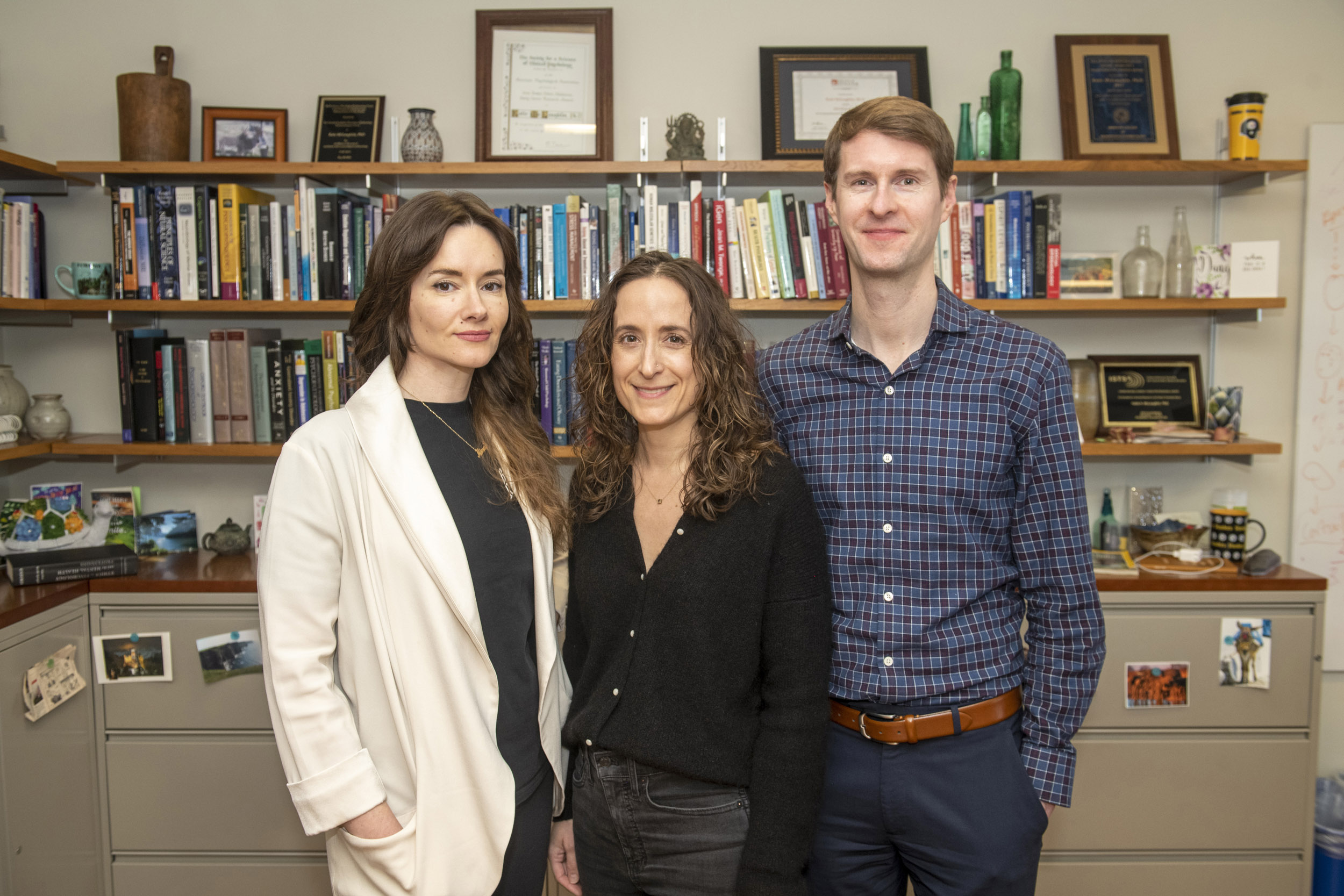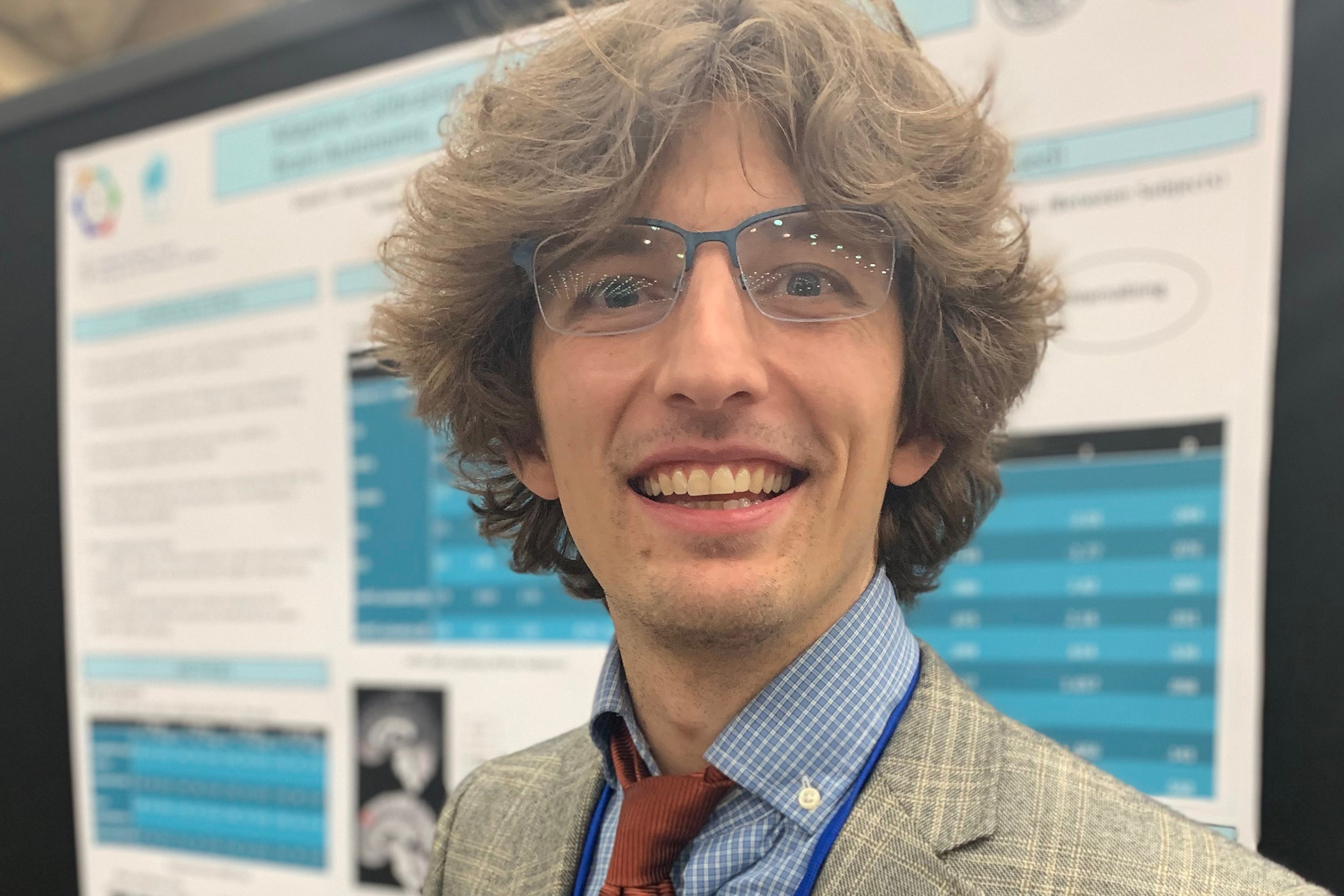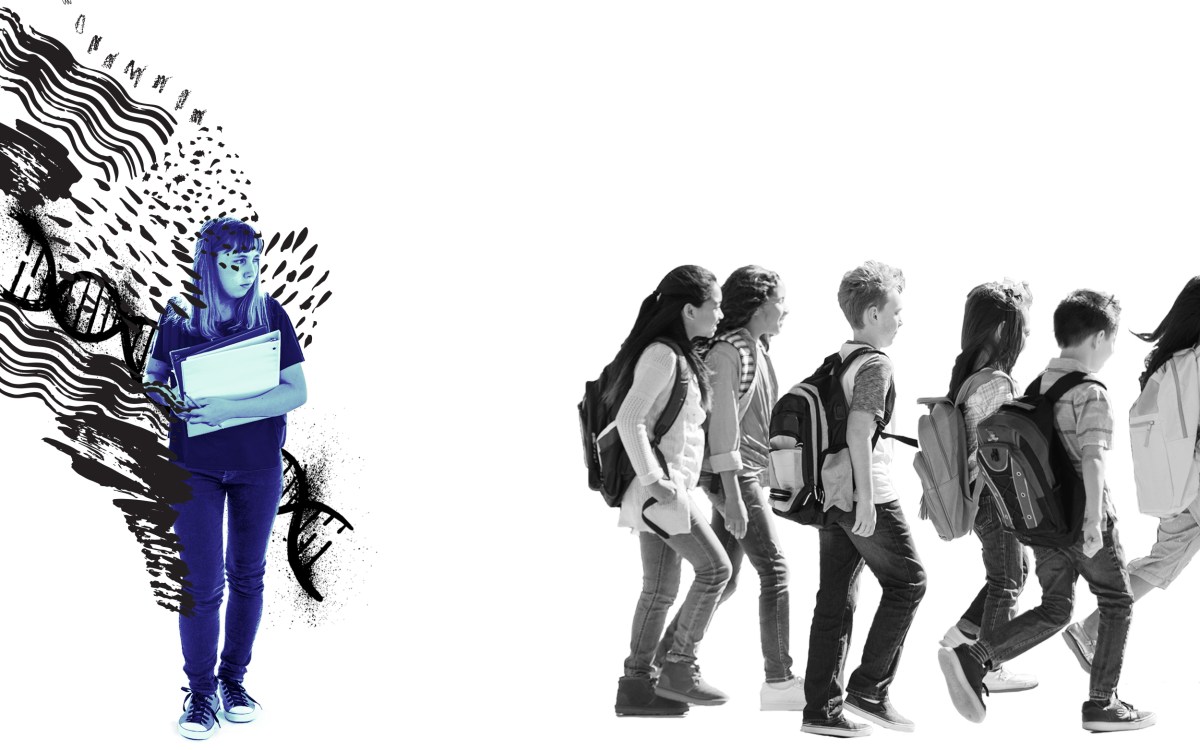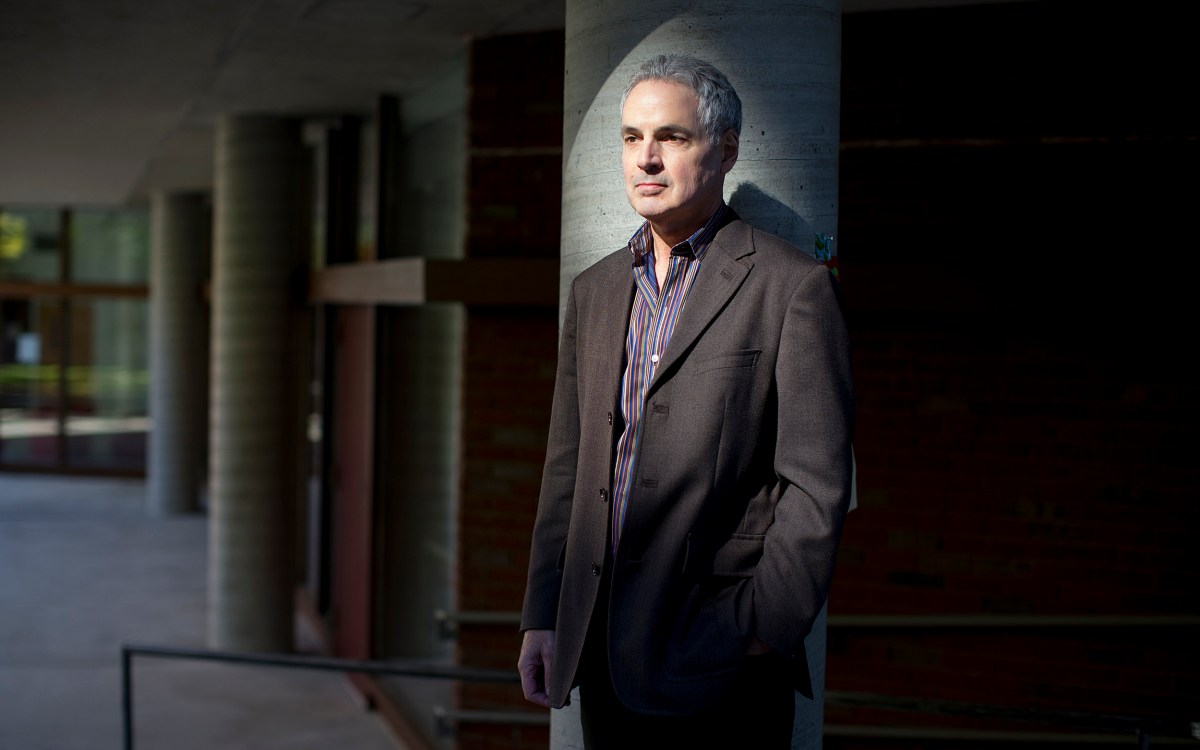
Researchers Mina Cikara (from left), Katie A. McLaughlin, and Mark L. Hatzenbuehler.
Jon Chase/Harvard Staff Photographer
Poverty hurts children’s brain development but social safety net may help
New study finds robust aid programs cut disparities in structure, mental health, especially in states where cost of living is high
Time and again, science finds that poverty is hard on developing brains.
“Higher levels of anxiety and depression are well-established among kids growing up in families with lower income,” said Harvard psychology Professor Katie A. McLaughlin. “Over the past decade or so, we’ve learned there are also well-replicated differences in brain development as a function of a family’s socioeconomic status.”
But a robust social safety net may buffer young minds from these effects, according to a new paper in Nature Communications by McLaughlin and her colleagues. Benefits like cash assistance and access to Medicaid seem to be especially beneficial for children in states with a high cost of living.
The researchers relied on the Adolescent Brain Cognitive Development (ABCD) Study, which follows more than 11,000 youth in 17 states. ABCD collects troves of parent-reported behavioral health data and uses neuroimaging to track brain development. “Historically, it’s quite rare to have what we call multisite neuroimaging studies, where you’re collecting data from people at lots of different locations,” McLaughlin said.
A previous study led by Mark L. Hatzenbuehler, the John L. Loeb Associate Professor of the Social Sciences, used ABCD data to find associations between brain structure and the prevalence of stigmas including racism, sexism, and anti-immigration attitudes in various states.
“These are really the first studies that are able to examine how broader aspects of the social and economic environment impact brain development,” said McLaughlin, noting that Hatzenbuehler is a co-author of the new paper. “We think they open an entirely new set of research questions that we’re calling ‘contextual cognitive neuroscience.’”

David Weissman is the study’s lead author and a postdoctoral fellow in McLaughlin’s Stress & Development Lab.
Photo courtesy of David Weissman
Past research has established that children growing up in low-income households “tend to have smaller volume of the hippocampus,” said David Weissman, lead author on the new paper and a postdoctoral fellow in McLaughlin’s Stress & Development Lab. The hippocampus is central to memory and learning, Weissman added, but it’s also sensitive to chronic stress. Animal studies show that consistently elevated stress hormones such as cortisol can reduce the formation of synapses (or connections between neurons) in this region of the brain.
It matters because a smaller hippocampus is a predictor of lower academic achievement, McLaughlin said. “There’s also fairly consistent evidence that kids with smaller hippocampal volume may be more vulnerable to developing mental health problems, especially during adolescence.”
Consistent with prior research, Weissman and his team found lower hippocampal volume in 10-and 11-year-old ABCD participants from low-income families. Also documented in this population were higher rates of mental health challenges, including anxiety and depression.
The biggest disparities between children from low- and high-income families were found in states with a high cost of living.
“But interestingly, we see this is not an inevitable outcome,” McLaughlin said. In fact, generous social spending appears to reduce the gap between children from high- and low-income families in expensive states like California and New York. “What we see is that the disparity is similar to that of much less expensive states,” McLaughlin said. “The magnitude of disparities in brain structure is reduced by about a third, while mental health disparities are cut almost in half.”
Researchers looked at the impacts of three government programs: state and federal Earned Income Tax Credit, Temporary Assistance for Needy Families, and Medicaid expansion under the Affordable Care Act. The generosity of the programs varies by state, which is easy to track, thanks to abundant public data.
As Weissman emphasized, researchers were even able to pinpoint ABCD families who qualify for public assistance. They also identified participants from households with incomes just above the eligibility cutoff. “We found the impact of anti-poverty programs was specific to those who actually benefited,” he said.
A supplemental test found a reduction of disparities in states with a higher minimum wage. “We use these specific policies to test our research questions,” McLaughlin noted, “but we really think they’re just indicators of a much broader set of social safety net policies that cover many domains of life.”
Going forward, Weissman hopes to leverage ABCD data for what he calls “natural experiments.” That is, he wants to follow the rollout of new anti-poverty policies.
As an example, McLaughlin pointed to the various U.S. cities — including Los Angeles and several others in California — piloting universal basic income programs. If one of the ABCD states implemented a policy like that, she said, “It would allow us to examine whether there’s a reduction in socioeconomic disparities in children’s brain structure and mental health.”
The research described in this report was funded by the National Institute of Mental Health and National Science Foundation CAREER award.








